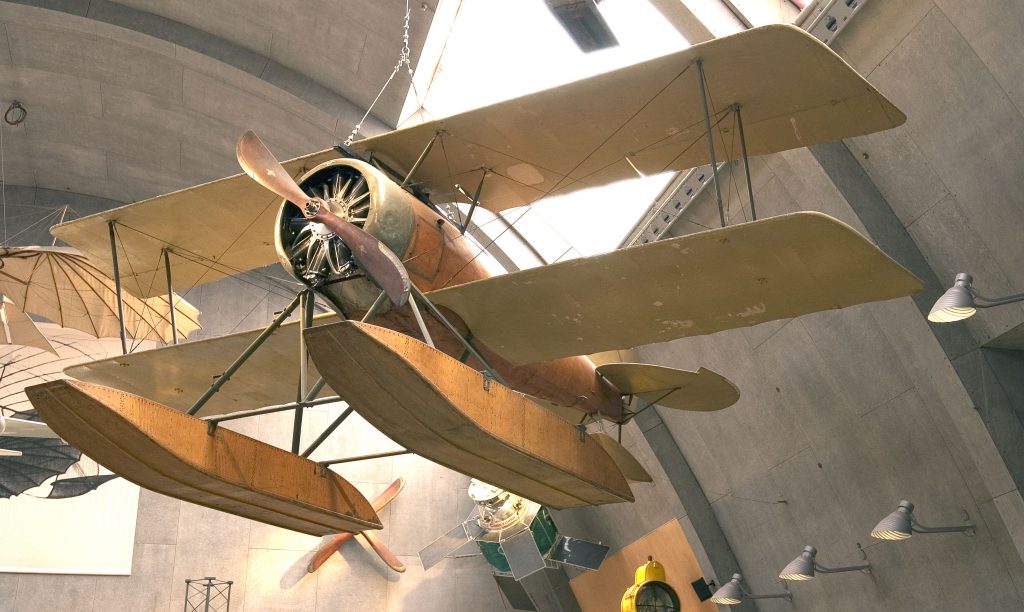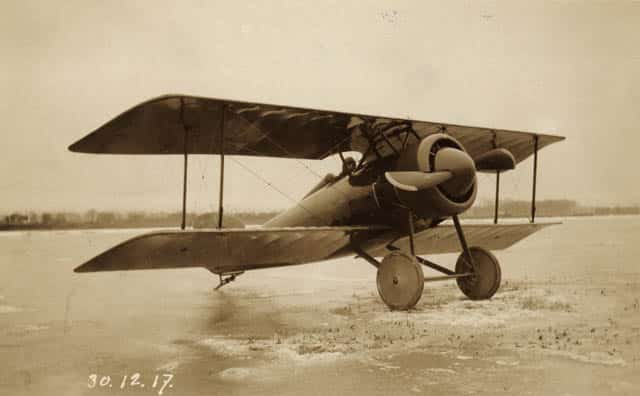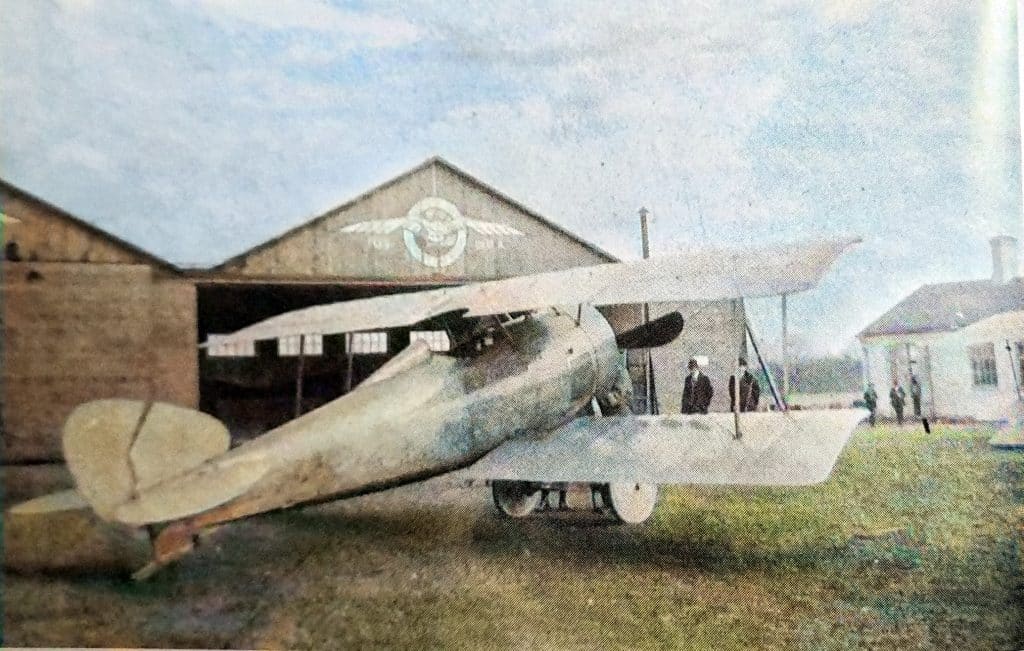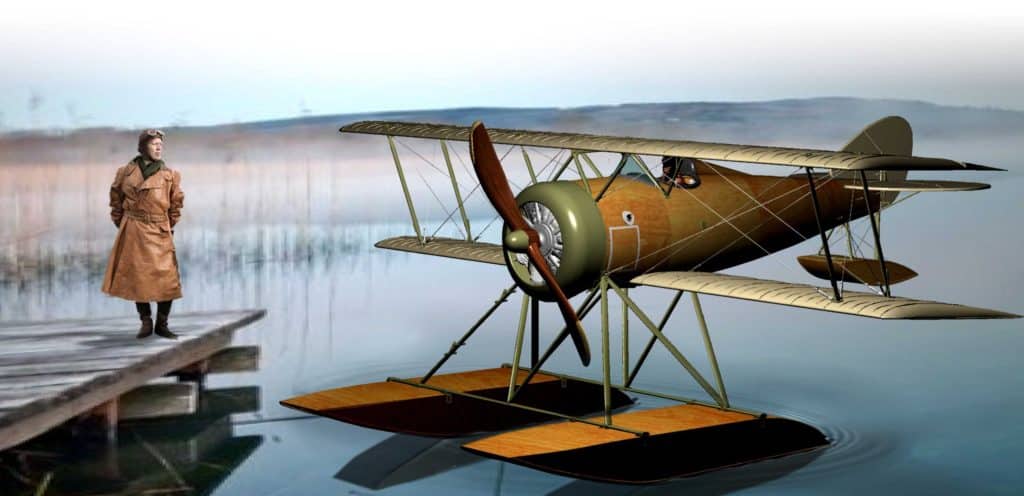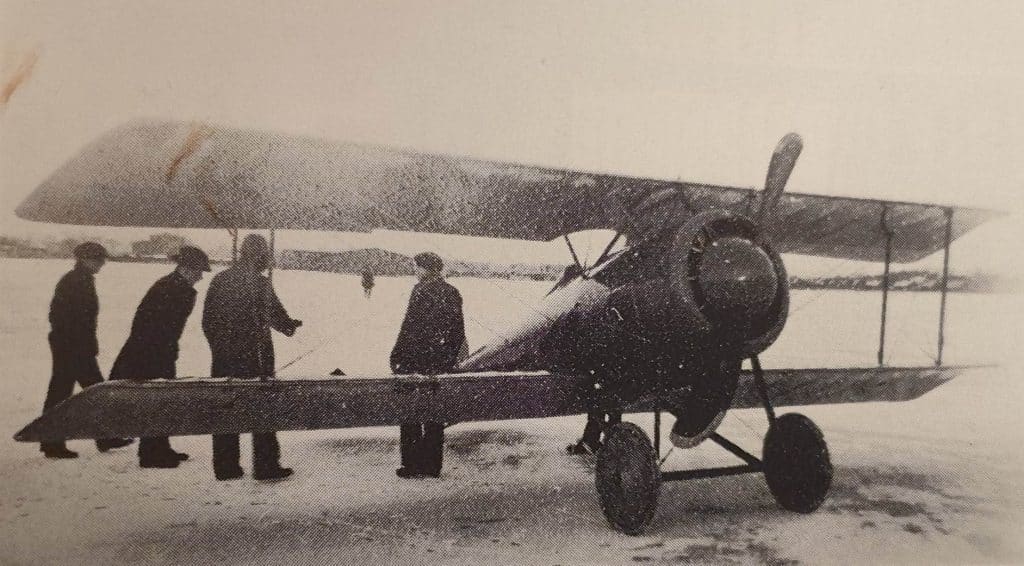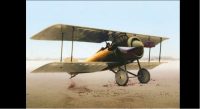In 1917 the Thulin company, AETA, started study a future fighter aircraft. They had already hastily designed the fighter plane Thulin K, wich was sold to both Swedish and Dutch air forces. Its design, however, was obsolete already when development started, since it was basically a mix of Thulin B and D.
The company and its engineers were of course fully aware of this, but the main purpose with the K was to get something out from the factory fast.
Looking into the future was a completely different task and here chief engineer Ivar Malmer and dr Thulin got valuable help from Tord Ångström. Ångström was already an accomplished pilot and engineer and was at the moment studying aerodynamics at the university, but did practice job at AETA. It has been said that Thulin N is in fact to a great part Ångströms work.
During the autumn of 1917 the Swedish Flying Corps announced a ”Fighter design competition”, where different Swedish manufacturers were asked to present their design for a fighter airplane all to be presented in February 1918.
One condition was that the presented fighter should use a Swedish copy of the 110 hp Mercedes DI.
By this time Thulin N was well on its way and already in October the company announced their design to be ready.
However, AETA’s engineers clearly understood that a fighter powered by a totally obsolete 110 hp heavy inline engine would be useless as a fighter and instead argued that their brand new 135 hp far lighter rotary engine was a much better way to go.
In fact leading officers of the Flying Corps was of the same opinion but because the fighters should be used primarily around major cities and with little or no time to warm up engines – as was the case with all inline engines at the time.
Of course this ruled Thulin N out of the competition. (Maybe a combination of dr Thulin not being known for being very diplomatic, as well as a dose of military pride)
The winner turned out to be a complete disaster with a fatal crash on its maiden flight and less than a handful flights for the following planes.
Not long after though, the Flying Corps asked AETA to deliver a number of Thulin N:s
It’s not known why AETA turned down the offer. Was it pride? Was it that development of ”The improved N – the NA” had started?
The Thulin Type N was a small, lightweight and very streamlined design, a result of the Thulin company having one of Europes few big windtunnels in its test lab. The N flew for the first time in late december 1917 with Enoch Thulin himself at the controls. It was flown with wheels for some time before being put on floats.
It was soon realised that the design was not suited for serial production and that an “improved N” was needed.
The prototype was put on display on several occations until 1929, before being donated to the Technical Museum in Stockholm. Besides some damages to the fuselage and cowl, the Type G engine has been changed into a Type A – or so it looks on photos.
